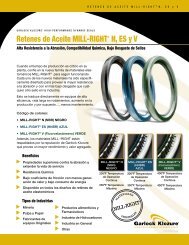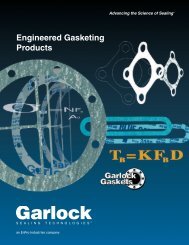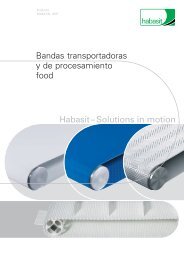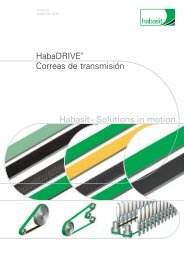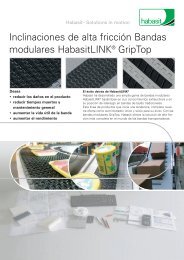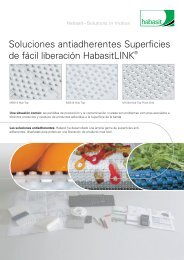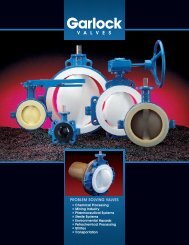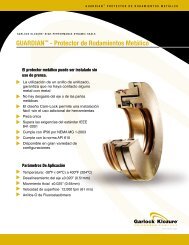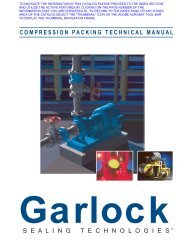Create successful ePaper yourself
Turn your PDF publications into a flip-book with our unique Google optimized e-Paper software.
Gasket InstallationIn a flanged connection, all components must becorrect to achieve a seal. The most common causeof leaky gasketed joints is improper installationprocedures.Bolting Procedures4-Bolt Flange 8-Bolt Flange 16-Bolt Flange■ Place the gasket on the flange surface to be sealed.■ Bring the opposing flange into contact with thegasket.■ Clean the bolts and lubricate them with a qualitylubricant, such as an oil and graphite mixture.■ Place the bolts into the bolt holes.■ Finger-tighten the nuts.■ Follow the bolting sequence in the diagrams above.■ During the initial tightening sequence, do not tightenany bolts more than 30% of the recommended boltstress. Doing so will cause cocking of the flangeand the gasket will be crushed.■ Upon reaching the recommended torque requirements,do a clockwise bolt-to-bolt torque check tomake certain that the bolts have been stressedevenly.■ Due to creep and stress relaxation, it is essential toprestress the bolts to ensure adequate stress loadduring operation.WARNING:Properties/applications shown throughout this brochure are typical. Your specific applicationshould not be undertaken without independent study and evaluation for suitability.For specific application recommendations consult Garlock. Failure to select the propersealing products could result in property damage and/or serious personal injury.Performance data published in this brochure has been developed from field testing,customer field reports and/or in-house testing.While the utmost care has been used in compiling this brochure, we assume no responsibilityfor errors. Specifications subject to change without notice. This edition cancelsall previous issues. Subject to change without notice.Hydrostatic TestingPrecautions■ If hydrostatic tests are to be performed at pressureshigher than those for which the flange wasrated, higher bolt pressures must be applied inorder to get a satisfactory seal under the testconditions.■ Use high-strength alloy bolts (ASTM B 193 GradeB7 is suggested) during the tests. They may beremoved upon completion. Higher stress valuesrequired to seat the gasket during hydrostatictests at higher than flange rated pressures maycause the standard bolts to be stressed beyondtheir yield points.■ Upon completion of hydrostatic testing, relieve allbolt stress by 50% of the allowable stress.■ Begin replacing the high-strength alloy bolts(suggested for test conditions) one by one withthe standard bolts while maintaining stress on thegasket.■ After replacing all the bolts, follow the tighteningprocedure recommended in the bolting sequencediagrams.Prestressing Bolts forThermal ExpansionBolts should be prestressed to compensate forthermal expansion as well as for relaxation, creep,hydrostatic end pressure and residual gasket loads.A difference in the coefficient of thermal expansionbetween the materials of the flange and thebolts may change loads. In cases of serious thermalexpansion, it may be necessary to apply a minimumof stress to the bolts and allow the pipe expansion tocomplete the compression of the gasket.A gasket with a centering guide ring should becompressed to the guide ring. A gasket without acentering guide ring must be installed with precautionstaken to prevent thermal expansion fromcrushing the gasket beyond its elastic limit.36




